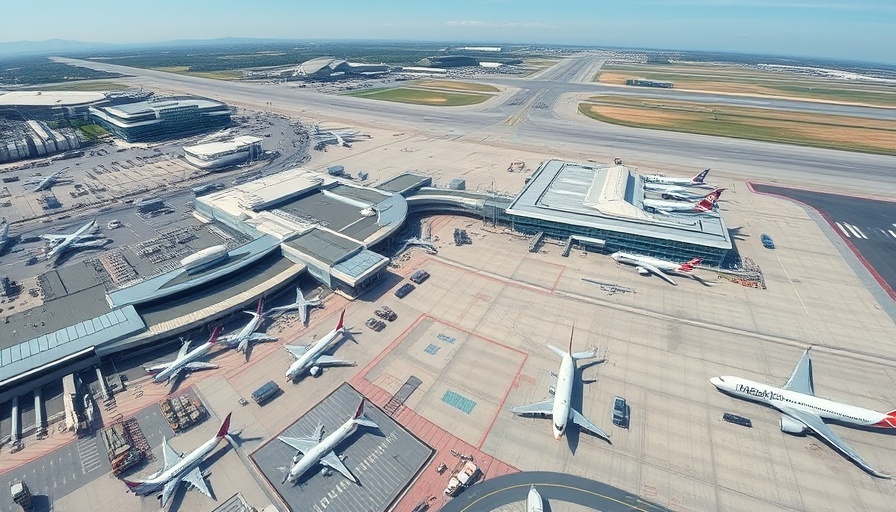
Austin's Airport Expansion: A Future-Forward Approach
Austin-Bergstrom International Airport (ABIA) is more than just a transit hub; it’s a rapidly evolving cornerstone of the city’s economic landscape. As the airport embarks on a monumental $4 billion expansion to increase its capacity and enhance its facilities, it begs the question: what does the future hold for air travel in Austin?
Historic Growth and What Lies Ahead
Currently under construction, the expansion project includes multiple phases that will update existing terminals and add a new terminal, expected to be completed by 2030. ABIA has experienced significant growth over the past few years, serving as a gateway to one of the fastest-growing metropolitan areas in the U.S. Yet, officials indicate that additional expansions will be necessary shortly after this project concludes, indicating a long-term vision for accommodating a continuously rising number of travelers.
Keeping Pace with Demand: A Comprehensive Strategy
Passenger numbers have surged, with ABIA welcoming over 18 million travelers in 2022 alone. With this kind of growth, planning for additional terminals—namely C, D, E, and F—becomes imperative. This proactive approach not only addresses immediate capacity but also anticipates the future demands of travelers who expect more efficient and comfortable airport experiences.
Community Impact: Festivals and Events Driving Traffic
The increase in air traffic at ABIA is not solely driven by business travel. Austin’s vibrant culture, coupled with events like the Austin City Limits Festival and South by Southwest (SXSW), attracts visitors in droves, further solidifying the airport's position as a critical infrastructure point. Local businesses also stand to benefit from heightened visitor numbers, showcasing a symbiotic relationship between the airport and the broader Austin economy.
Airline Adjustments and Market Trends
As ABIA continues to grow, airlines are adjusting their routes and services accordingly. Increased competition among airlines ensures that travelers will have multiple options when booking flights, which, in turn, fosters better price points and services. As Austin becomes more prominent on the national stage, the airport’s growth trends will likely reflect broader tourism and economic fluctuations.
Looking Forward: Strategic Investments
The Austin business community is enthusiastic about the airport expansion. As business news in Austin frequently highlights, strategic investments and infrastructure improvements remain crucial for fostering economic growth. The airport is a critical asset for local businesses looking to expand their operations and connect to broader markets.
Community Concerns: Balancing Growth and Infrastructure
While the prospect of expansion has many advantages, it also presents challenges. Infrastructure strains, traffic congestion, and environmental impacts are critical concerns that the Austin community must address. Engaging local residents in the planning process will be vital to ensuring sustainable growth that benefits everyone.
Final Thoughts: ABIA's Role in Austin's Future
ABIA's expansion is just the beginning of an exciting chapter in Austin's growth story. As the city continues to thrive, the airport’s development will be pivotal in shaping the future of travel in Central Texas. For Austin residents and business owners alike, the airport represents opportunities for connection and commerce that align with the city’s dynamic evolution.
Now is the time for residents and business owners to engage with local leaders about infrastructure needs and community priorities to ensure that growth is both beneficial and sustainable. The conversation starts here: how will you be part of Austin's future?
 Add Element
Add Element  Add Row
Add Row 



Write A Comment